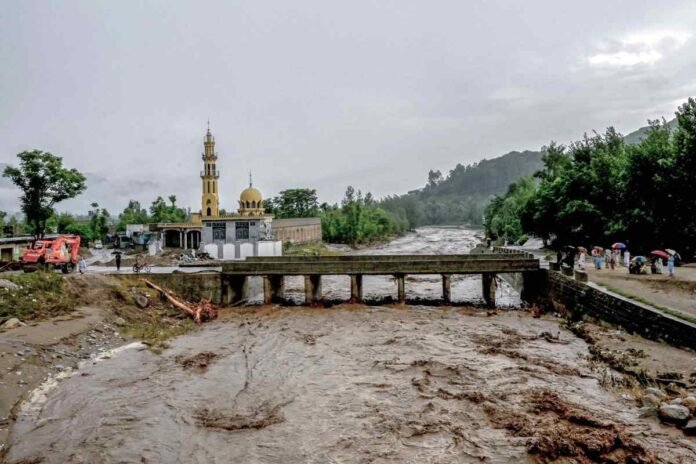Pakistan is enduring one of its deadliest monsoon seasons in years, with relentless rains and floods leaving widespread devastation. Since late June, at least 657 people have lost their lives and more than 920 have been injured, according to the National Disaster Management Authority (NDMA).
Cloudburst Tragedy in Swabi
Fresh downpours on Monday triggered a cloudburst and landslides in Swabi, Khyber Pakhtunkhwa (KP), killing two women and two children after a roof collapsed in Sarkoi Payan. Several houses in Dalori village were swept away by flash floods, while landslides cut off access to multiple settlements.
Elsewhere in KP, a couple died when their home collapsed in Nowshera, while heavy rainfall paralysed Mingora and Malakand. In Buner, rescuers struggled to reach villages after a key makeshift bridge weakened. Parachinar saw flash floods damage embankments, though no casualties were reported.
Peshawar and Punjab Swamped
Peshawar’s streets turned into rivers after overnight downpours, flooding Saddar Bazaar, University Road, Hayatabad, and several residential areas. Water entered police stations and homes, leaving vehicles stranded.
Punjab also reeled under heavy showers, with Multan, Kabirwala, Jhang, and Khushab reporting urban flooding. Chakwal recorded up to 67mm of rain in some areas, while Bhakkar and Miani saw entire neighbourhoods inundated.
Rivers and Reservoirs at Dangerous Levels
Floodwaters are pushing rivers and dams close to capacity. Authorities reported medium flood levels along the Indus at Kalabagh, Jinnah Barrage, Chashma, and Taunsa, with warnings issued for low-lying settlements. Tarbela Dam is now 97% full, while Mangla has reached 71% of its capacity.
The Meteorological Department has forecast more heavy rain through August 19, warning that three additional wet spells are expected before early September.
Grim National Toll
The NDMA confirmed that KP alone accounts for 390 deaths, making it the hardest-hit province. Punjab has reported 164 fatalities, Sindh 28, Balochistan 20, Gilgit-Baltistan 32, Azad Kashmir 15, and Islamabad 8. Children remain the most vulnerable—171 of the dead nationwide were minors.
NDMA chief Lt Gen Inam Haider cautioned that this year’s monsoon intensity is 50–60% stronger than last year, with more floods expected.
Government Calls for Collective Response
Federal Information Minister Attaullah Tarar, speaking after a meeting chaired by Prime Minister Shehbaz Sharif, said relief and rebuilding must be treated as a “national responsibility.” He confirmed that federal ministries and the armed forces are on the ground in KP, Azad Kashmir, and Gilgit-Baltistan, coordinating with provincial authorities to restore roads and deliver aid.
Climate Factor Behind Rising Disasters
Meteorologists warn that Pakistan’s vulnerability to extreme weather is worsening. Chief meteorologist Zaheer Babar noted that mountain rains often trigger flash floods downstream, while human practices—such as unregulated construction and blocked waterways—magnify destruction.
Pakistan ranks among the world’s most climate-vulnerable nations. The devastation recalls the catastrophic 2022 floods, when a third of the country went under water and nearly 1,700 people were killed.

